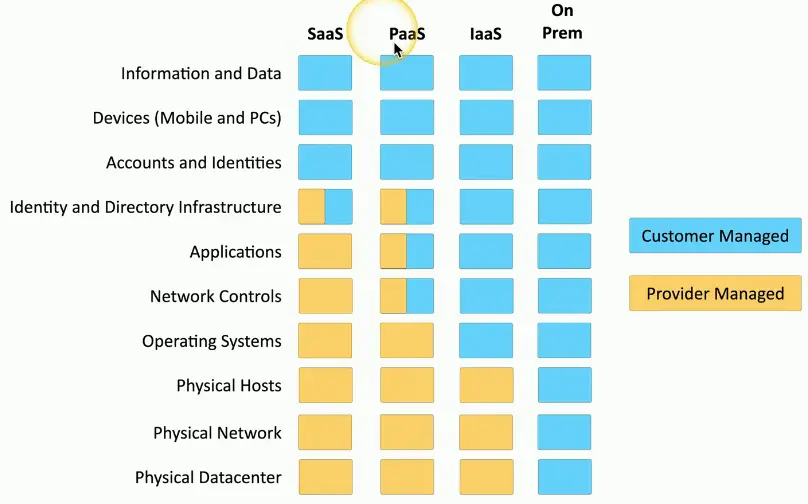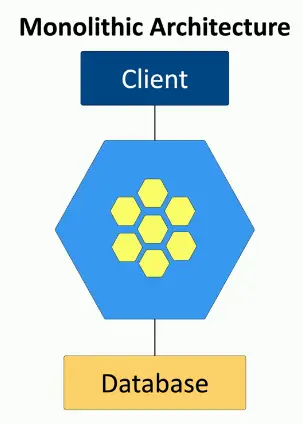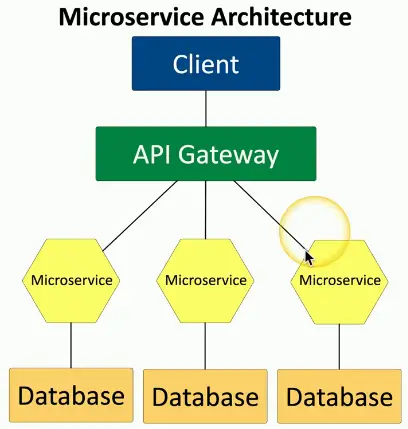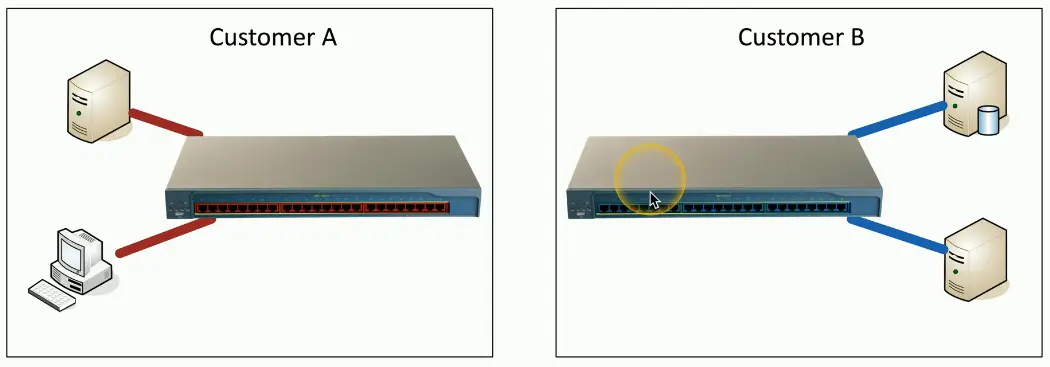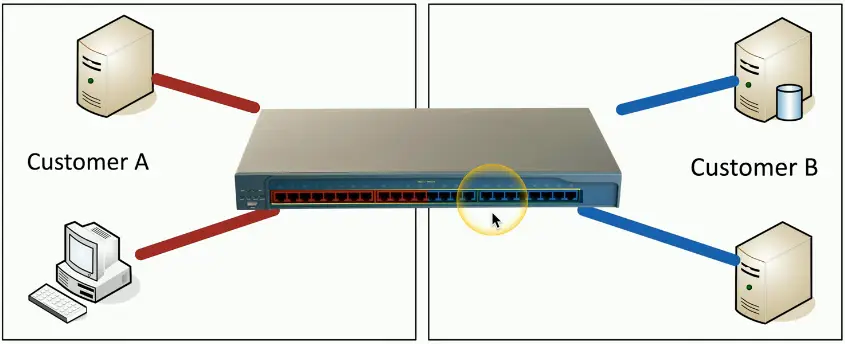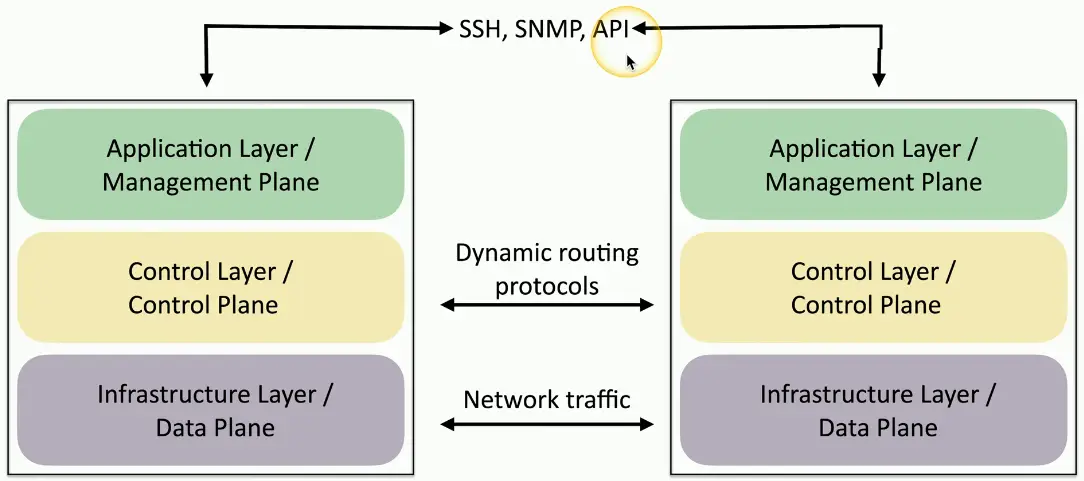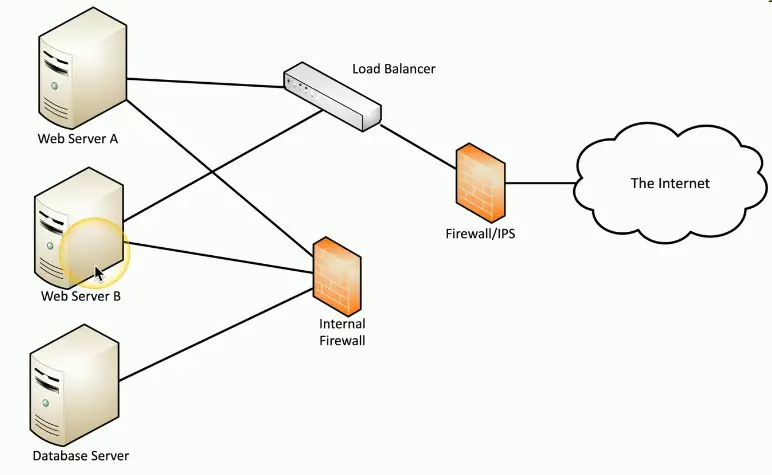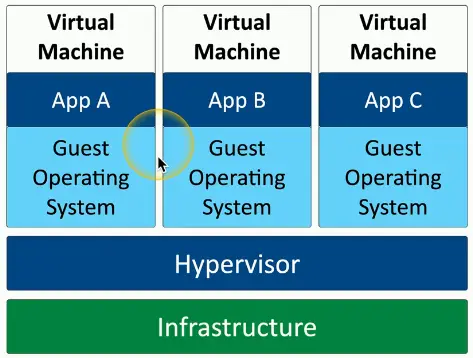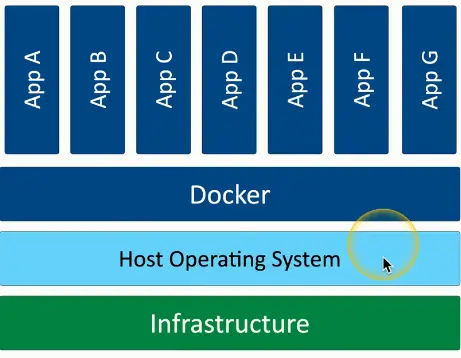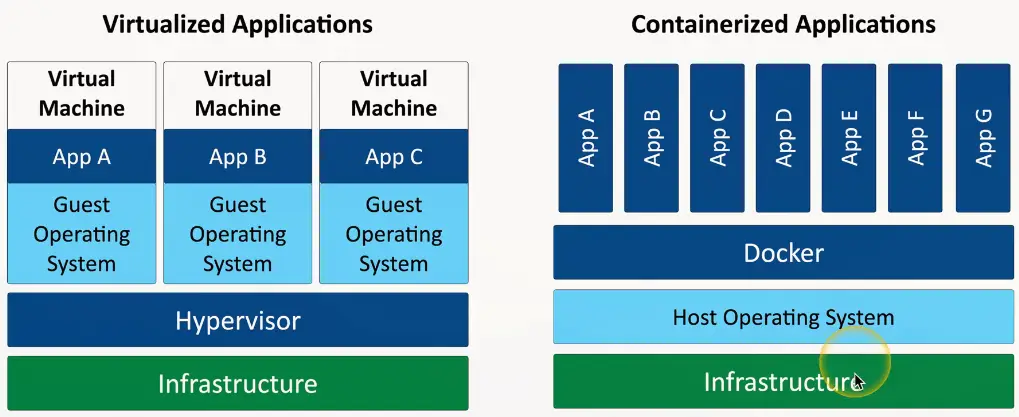Architecture Models
Warning
The soaring Cloud Computing costs, unexpected high bills, and multitude of hidden charges, make Cloud a lot less viable option than on-prem options. Depending on the organization’s needs and size, On-premise Cloud Computing will be a cheaper alternative.
The Cloud Tipping Point | Lawrence Systems
Cloud Responsibility Matrix
IaaS, PaaS, SaaS, etc.
- Who is responsible for security?
Security should be well documented
- Most cloud providers provide a matrix of responsibilities
- Everyone knows up front
These responsibilities can vary
- Different cloud providers
- Contractual agreements
Hybrid Considerations
Hybrid cloud
- More than one public or private cloud
- This adds additional complexity
Network protection mismatches
- Authentication across platforms
- Firewall configurations
- Server settings
Different security monitoring
- Logs are diverse and cloud-specific
Data leakage
- Data is shared across public Internet
Third-Party Vendors in the Cloud
You, the cloud provider, and the third parties
- Infrastructure technologies
- Cloud-based appliances
Ongoing vendor risk assessments
- Part of an overall vendor risk management policy
Include third-party impact for incident response
- Everyone is part of the process
Constant monitoring
- Watch for changes and unusual activity
Infrastructure as Code
Describe an infrastructure
- Define servers, network, and applications as code
Modify the infrastructure and create versions
- The same way you version application code
Use the description (code) to build other application instances
- Build it the same way every time based on the code
An important concept for cloud computing
- Build a perfect version every time
Serverless Architecture
Function as a Service (FaaS)
- Applications are separated into individual, autonomous functions
- Remove the OS from the equation
Developer still creates the server-side logic
- Runs in a stateless compute container
May be event triggered and ephemeral
- May only run for one event
Managed by a third-party
- All OS security concerns are at the third party
Microservices and APIs
Monolithic applications
- One big application that does everything
Application contains all decision-making process
- User interface
- Business logic
- Data input and output
Code challenges
- Large codebase
- Change control challenges
APIs
- Application Programming Interface
API is the “glue” for the microservices
- Work together to act as the application
Scalable
- Scale just the microservices you need
Resilient
- Outages are contained
Security and compliance
- Containment is built-in
Network Infrastructure Concepts
Physical Isolation
Devices are physically separate
- Air gap between Switch A and Switch B
Must be connected to provide communication
- Direct connect, or another switch or router
Web servers in one rack
- Database servers on another
Customer A on one switch, customer B on another
- No opportunity for mixing data
Physical Segmentation
Separate devices
- Multiple units, separate infrastructure
Logical Segmentation with VLANs
Virtual Local Area Networks (VLANs)
- Separated logically instead of physically
- Cannot communicate between VLANs without a Layer 3 device/router
SDN (Software Defined Networking)
Networking devices have different functional planes of operation
- Data, control, and management planes
Split the functions into separate logical units
- Extend the functionality and management of a single device
- Perfectly built for the cloud
Infrastructure layer/Data plane
- Process the network frames and packets
- Forwarding, trunking, encrypting, NAT
Control layer/Control plane
- Manages the actions of the data plane
- Routing tables, session tables, NAT tables
- Dynamic routing protocol updates
Application layer/Management plane
- Configure and manage the device
- SSH, browser, API
Extend the Physical Architecture
SDN Data Flows
SDN Security
Other Infrastructure Concepts
Attacks can happen anywhere
Two categories for IT security
- The on-premises data is more secure!
- The cloud-based data is more secure!
Cloud-based security is centralized and costs less
- No dedicated hardware, no data center to secure
- A third party handles everything
On-premises puts the security burden on the client
- Data center security and infrastructure costs
Attackers want your data
- They don’t care where it is
On-premises Security
Customize your security posture
- Full control when everything is in-house
On-site IT team can manage security better
- The local team can ensure everything is secure
- A local team can be expensive and difficult to staff
Local team maintains uptime and availability
- System checks can occur at any time
- No phone call for support
Security changes can take time
- New equipment, configurations, additional costs
Centralized vs. Decentralized
Most organizations are physically decentralized
- Many locations, cloud providers, OSes, etc.
Difficult to manage and protect so many diverse systems
- Centralize the security management
A centralized approach
- Correlated alerts
- Consolidated log file analysis
- Comprehensive system status and maintenance/patching
It’s not perfect
- Single point of failure, potential performance issues
Virtualization
Virtualization
- Run different OSes on the same hardware
Each application instance has its own OS
- Adds overhead and complexity
- Virtualization is relatively expensive
Application Containerization
Container
- Contains everything you need to run an application
- Code and dependencies
- A standardized unit of software
An isolated process in a sandbox
- Self-contained
- Apps can’t interact with each other
Container image
- A standard for portability
- Lightweight, uses the host kernel
- Secure separation between applications
Virtualized vs. Containerized
IoT (Internet of Things)
Sensors
- Heating and cooling, lighting
Smart devices
- Home automation, video doorbells
Wearable technology
- Watches, health monitors
Facility automation
- Temperature, air quality, lighting
Weak defaults
- IOT manufacturers are not security professionals
SCADA/ICS
Supervisory Control and Data Acquisition System
- Large-scale, multi-site Industrial Control Systems (ICS)
PC manages equipment
- Power generation, refining, manufacturing equipment
- Facilities, industrial, energy, logistics
Distributed control systems
- Real-time information
- System control
Requires extensive segmentation
- No access from the outside
RTOS (Real-Time Operating System)
An OS with a deterministic processing schedule
- No time to wait for other processes
- Industrial equipment, automobiles
- Military environments
Extremely sensitive to security issues
- Non-trivial systems
- Need to always be available
- Difficult to know what type of security is in place
Embedded Systems
Hardware and software designed for a specific function
- Or to create as part of a larger system
Is built with only this task in mind
- Can be optimized for size and/or cost
Common examples
- Traffic light controllers
- Digital watches
- Medical imaging systems
High Availability
Redundancy doesn’t mean always available
- May need to be powered on manually
HA (High availability)
- Always on, always available
Many include many components working together
- Active/active can provide scalability advantages
Higher availability almost always means higher costs
- There’s always another contingency you could add
- Upgraded power, high-quality server components, etc.
Infrastructure Consideration
Availability
System uptime
- Access data, complete transactions
- A foundation of IT security
A balancing act with security
- Available, but only to the right people
WE spend a lot of time and money on availability
- Monitoring, redundant systems
An important metric
- We are often evaluated on total available time
Resilience
Eventually, something will happen
- Can you maintain availability?
- Can you recover? How quickly?
Based on many variables
- The root cause
- Replacement hardware installations
- Software patch availability
- Redundant systems
Commonly referenced as MTTR
- Mean Time to Repair
Cost
How much money is required?
- Everything ultimately comes down to cost
Initial installation
- Very different across platforms
Ongoing maintenance
- Annual ongoing cost
Replacement or repair costs
- You might need more than one
Tax implications
- Operating or capital expense
Responsiveness
Request information
- Get a response
- How quickly did that happen?
Especially important for interactive applications
- Humans are sensitive to delays
Speed is an important metric
- All parts of the application contribute
- There’s always the weakest link
Scalability
How quickly and easily can we increase or decrease capacity?
- This might happen many times a day
- Elasticity
There’s always a resource challenge
- What’s preventing scalability?
Needs to include security monitoring
- Increases and decreases as the system scales
Ease of Deployment
An application has many moving parts
- Web server, database, caching server, firewall, etc.
This might be an involved process
- Hardware resources, cloud budgets, change control
This might be very simple
- Orchestration/automation
Important to consider during the product engineering phase
- One missed detail can cause deployment issues
Risk Transference
Many methods to minimize risk
- Transfer the risk to a third party
Cybersecurity insurance
- Attacks and downtime can be covered
- Popular with the rise in ransomware
Recover internal losses
- Outages and business downtime
Protect against legal issues from customers
- Limit the costs associated with legal proceedings
Ease of Recover
Something will eventually go wrong
- Time is money
- How easily can you recover?
Malware infection
- Reload OS from original media — 1 hour
- Reload from corporate image — 10 minutes
Another important design criteria
- This may be critical to the final product
Patch Availability
Software isn’t usually static
- Bug fixes, security updates, etc.
This is often the first task after installation
- Make sure you’re running the latest version
Most companies have regular updates
- Microsoft’s monthly patch schedule
Some companies rarely patch
- This might be a significant concern
Inability to Patch
What if patching wasn’t an option?
- This often happens than you might think
Embedded systems
- HVAC controls
- Time clocks
Not designed for end-user updates
- This is a bit short-sighted
- Especially these days
May need additional security controls
- A firewall for your time clock
Power
A foundational element
- This can require extensive engineering
Overall power requirements
- Data center vs. office building
Primary power
- One or more providers
Backup services
- UPS (Uninterruptible Power Supply)
- Generators
Compute
An application’s heavy lifting
- More than just a single Compute
The compute engine
- More options available in the cloud
May be limited to a single processor
- Easier to develop
Use multiple CPUs across multiple clouds
- Addtional complexity
- Enhanced scalability
